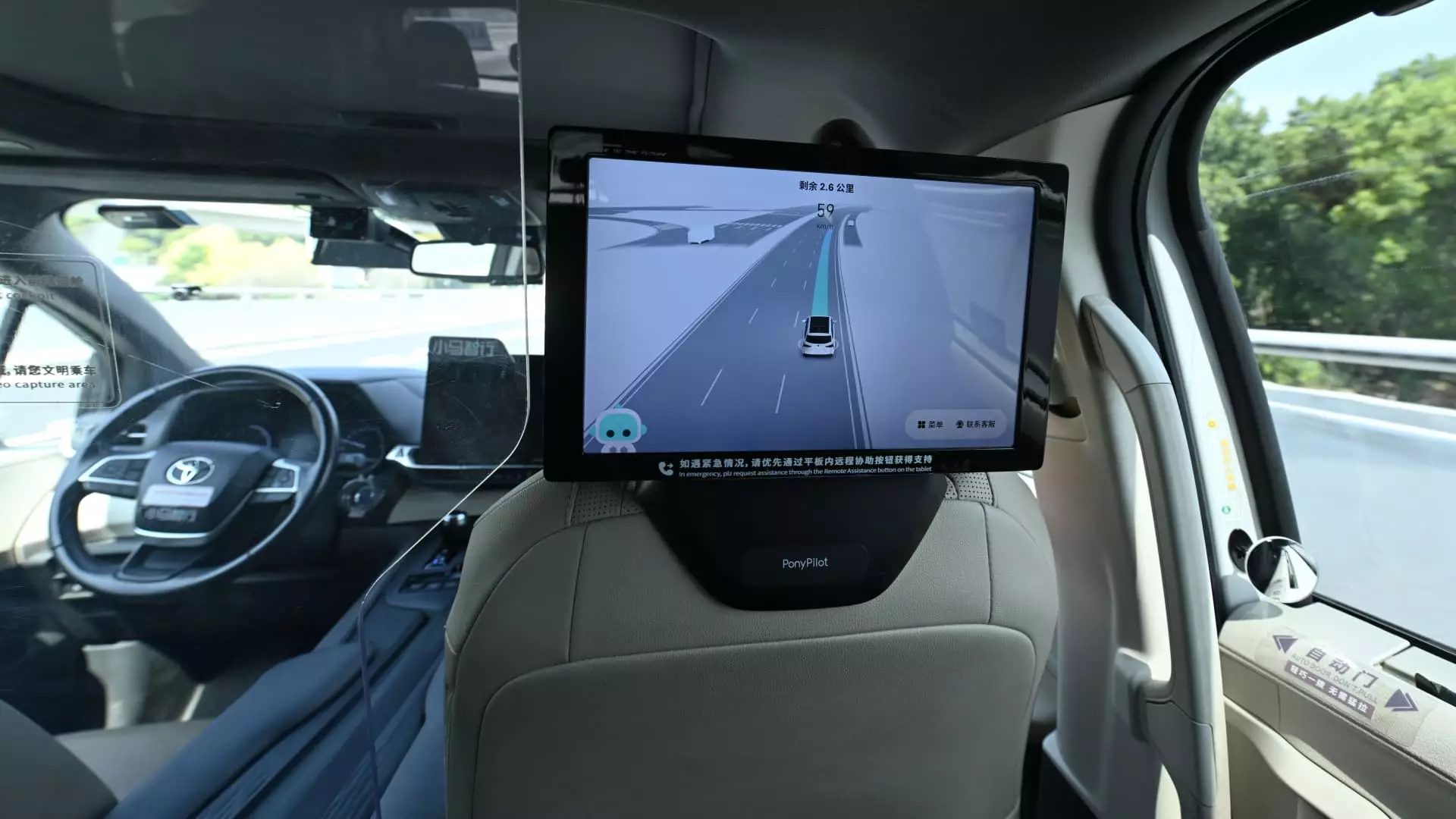In recent years, the narrative surrounding robotaxis has transformed from ambitious futurism to a cautiously optimistic reality. Major players like Waymo, Pony AI, Baidu, and WeRide are racing to carve out market dominance, each promising to revolutionize urban mobility. Yet beneath this veneer of innovation lies a complex web of technological challenges, economic hurdles, and regulatory obstacles that threaten to render these shiny autonomous vehicles (AVs) little more than experimental novelties rather than cornerstones of everyday transportation.
Despite claims that thousands of robotaxis are already operational in select cities, the truth remains: these fleets are still minuscule compared to the sprawling scale of urban transportation needs. Waymo boasts over 1,500 vehicles shuttling hundreds of thousands of passengers weekly. Still, these figures are but a fraction of what’s necessary to meaningfully impact traffic congestion, commute times, and public transit integration. Meanwhile, companies like Pony AI and Baidu push into European and Middle Eastern markets, but their reach remains limited, often constrained by regulatory caution and economic inefficiencies.
Economic Realities and the Impact of Cost-Cutting Strategies
One of the most significant claims boosting confidence in robotaxis is their potential for cost reduction and profitability. Chinese firms like Baidu have managed to slash vehicle costs by 70%, bringing their average unit price down to roughly $37,000—compared to Waymo’s $200,000 per car. This disparity highlights a core advantage Chinese manufacturers claim: affordability.
However, these dollar figures are misleading if we consider operational expenses. Autonomous technology, maintenance, charging infrastructure, and the need for continuous software updates are non-trivial costs that can erode profit margins. Chinese operators anticipate reaching profitability by 2025, but this optimism may be overly sanguine. The projected pricing models, especially in markets like the U.S. and Europe, suggest fares will be comparable to human-driven rides, which offers little incentive for consumers to switch from traditional options without major subsidies or regulatory mandates.
Moreover, the race to lower costs and scale quickly risks sacrificing safety and quality—essentials that cannot be compromised. Pony AI’s focus on improving safety and trimming costs is commendable but still leaves open questions about long-term maintenance, passenger trust, and legal liabilities if accidents occur. The hope that cheaper vehicles will speed up deployment might drown out the more pressing need for mature, reliable, and safe autonomous systems.
Regulation, Market Entry, and the Myth of the Autonomous Utopia
The regulatory landscape is arguably the greatest bottleneck in the expansion of robotaxis. While China has begun allowing fares in some urban and suburban areas, the rest of the world remains cautious. Cities and countries are grappling with safety standards, liability laws, and public acceptance. China’s aggressive push into deployment contrasts sharply with the slower, more cautious approach in the U.S. and Europe, where policy and legal frameworks lag far behind technological advancements.
International expansion efforts, such as WeRide’s pilot programs in Saudi Arabia and partnerships in the Middle East, look promising but are often driven more by optics and market positioning than sustainable profitability. These ventures face unpredictable regulatory environments and cultural barriers that may hinder widespread acceptance beyond initial pilots.
Furthermore, the claim by Baidu and other Chinese companies that overseas markets could be more lucrative than the Chinese domestic scene oversimplifies a complex equation. Consumer preferences, insurance regulations, and urban infrastructure differ dramatically across borders, making seamless international deployment an uncertain gambit. The notion that enabling fare-based services equates to breakthroughs is overly optimistic; without robust safety, consumer trust, and regulatory approval, these services risk becoming niche experiments rather than mass-market solutions.
The Underwhelming Reality of Autonomous Innovation
A sobering critique of the current robotaxi landscape is the disconnect between investor hype and technological reality. Advanced driver-assistance systems have made significant strides, yet full Level 4 autonomy remains elusive and all too often overpromised. Companies like Waymo emphasize fleet expansion, but their slow pace and limited geographic scope reveal the arduous path toward true independence from human drivers.
Meanwhile, Chinese firms are betting heavily on cost-effective manufacturing and regulatory wins to expand their fleets rapidly. However, cutting costs does not necessarily equate to safer or more reliable transportation. Even with lower vehicle prices, the infrastructure, legal frameworks, and public acceptance lag behind the dashed expectations of a driverless utopia.
The inherent challenge lies in the technology’s maturity—not in a lack of enthusiasm or market opportunity. Achieving fully autonomous, safe, and affordable robotaxis at scale is a monumental challenge that requires more time, investment, and cautious development. relentlessly pushing for rapid deployment might compromise safety and tarnish the credibility of autonomous technology in the long run.
The Cracks in the Autonomous Dream: An Optimistic Yet Skeptical Perspective
From a center-right liberal vantage, the allure of autonomy-driven mobility aligns with the broader goals of innovation, economic growth, and reducing urban congestion. Yet, this ideal must be tempered with realism. The current proof-of-concept stages are riddled with limitations; mass adoption remains a distant goal rather than an imminent reality.
Technological progress, although tangible, is often exaggerated in corporate narratives. The promise of cheaper, safer, and more efficient robotaxis tends to overshadow the complexities of urban regulation, infrastructure development, and consumer behavior. Rushing to deploy these vehicles en masse could lead to safety breaches, public mistrust, and ultimately, regulatory backlash.
If autonomous vehicles are to genuinely reshape urban transit, they must prioritize safety and reliability above cost-cutting and market expansion. Until then, robotaxis should be viewed skeptically—not as the revolutionizers they are made out to be, but as ambitious experiments still in search of their true purpose.

